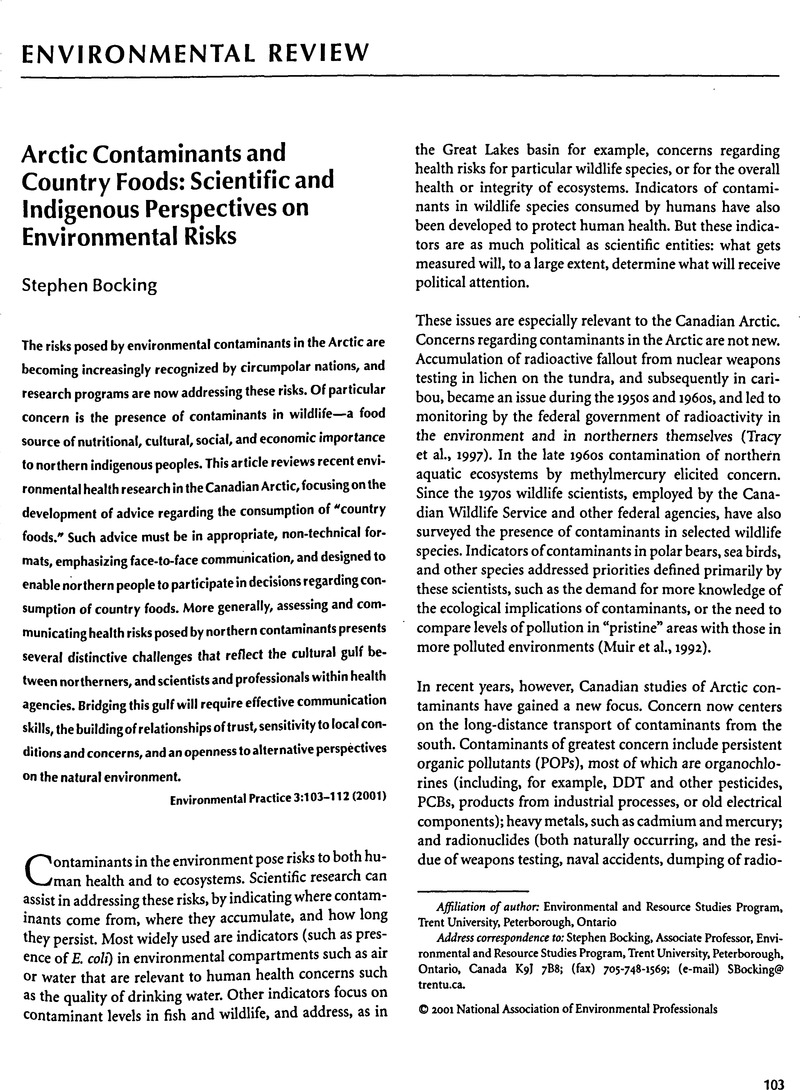Crossref Citations
This article has been cited by the following publications. This list is generated based on data provided by Crossref.
Shoal, Robin
2001.
The Work of the Pew Oceans Commission: Implications for Land Managers.
Environmental Practice,
Vol. 3,
Issue. 3,
p.
142.
Skinner, Kelly
Ratelle, Mylene
Brandow, Danielle
Furgal, Christopher
Boyd, Amanda
and
Laird, Brian
2024.
Awareness and perceptions of contaminants in the Dehcho and Sahtú Regions of the Northwest Territories.
International Journal of Circumpolar Health,
Vol. 83,
Issue. 1,



